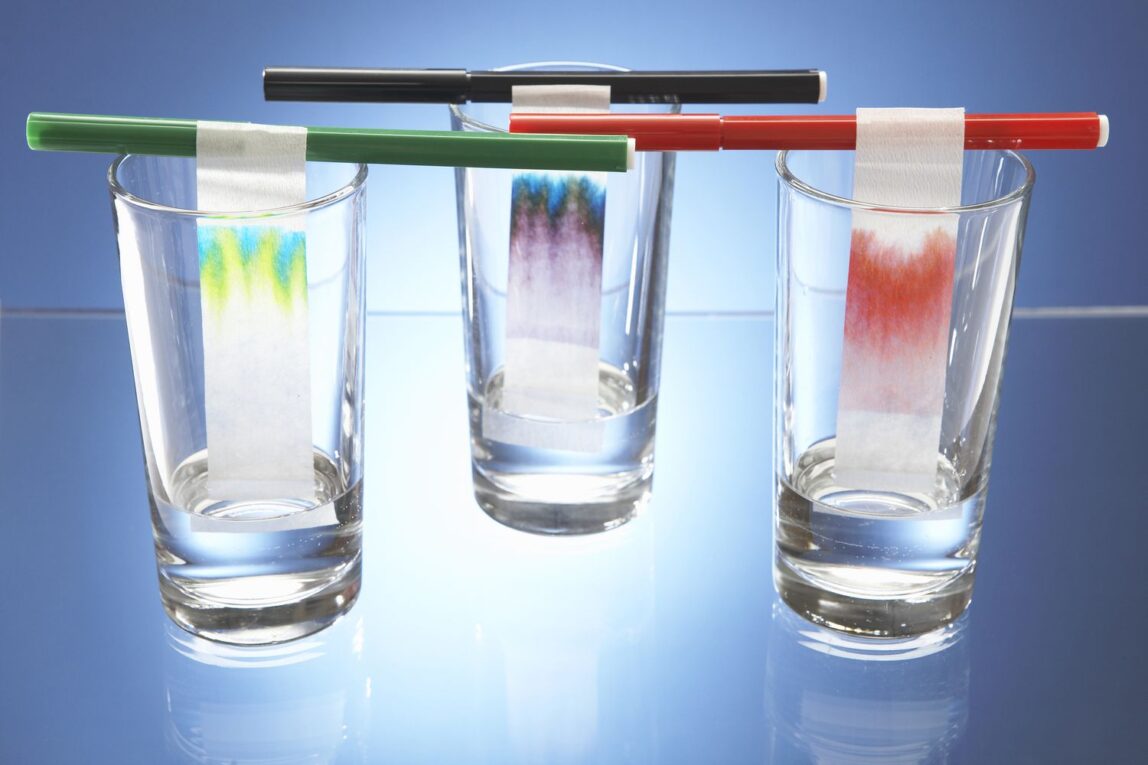Chromatography is a technique used widely by scientists in various fields like chemistry, biology and medicine for separation and analysis of mixture of components. The word chromatography is derived from Greek words “chroma” meaning color and “graphein” meaning to write, as early applications of chromatography involved using stains and dyes to visualize separation.
In Chromatography, the mixture is dissolved in a fluid called the mobile phase which carries it through a structure holding another material called the stationary phase. The different components of the mixture travel through the structure at different speeds depending on their interactions with the stationary phase, causing them to separate into detectable bands. There are various types of chromatography differentiated based on the nature of stationary and mobile phases used.
Gas Chromatography
Gas chromatography or GC is used to separate and analyze volatile components present in gases or mixtures that can be vaporized without decomposition. In GC, the stationary phase is coated on the inner walls of long, narrow tubes called columns. Commonly used stationary phases include polymers and liquidcoated walls of fused silica capillaries. The mobile phase is an inert gas like helium or nitrogen. The gaseous mixture is injected into the column inlet where it vaporizes and is carried through the column by the mobile phase. Components travel through the column at different speeds depending on their partitioning between the stationary and mobile phases, resulting in their separation. A detector is used at the end of the column to identify the separated components as they exit the column. GC finds applications in analyzing petrol, natural gas mixtures and food/flavor analysis.
Liquid Chromatography
Liquid chromatography or LC is used when the mixture components are thermolabile and cannot withstand temperature required for GC. In LC, the stationary phase is coated on inert support granules packed into columns. Commonly used stationary phases include silica, polymers and bonded ligand phases. The mobile phase is a liquid which carries the sample mixture through the packed column. Based on the type of stationary phase, LC can be categorized into normal phase, reverse phase, ion-exchange and size-exclusion chromatography. LC is used extensively in pharmaceutical industry for analysis of drugs and their metabolites, and in food/environmental testing. High performance liquid chromatography or HPLC uses columns packed with sub-2μm particles giving very high separation efficiency.
Paper Chromatography
Paper chromatography was one of the earliest forms of chromatography developed during early 20th century. In this technique, the stationary phase consists of cellulose fibers present in a thin strip of paper. The mobile phase is allowed to travel up the strip via capillary action. Different components in the mixture being separated are deposited at different points along the strip depending on their affinity for paper versus mobile phase. Detection involves use of stains and visualization under UV light. Paper chromatography has lesser separation efficiency as compared to other techniques but is very simple and inexpensive to perform, especially suitable for teaching basic principles. It finds applications in identifying amino acids, food colours and plant pigments.
Thin Layer Chromatography
Thin layer chromatography or TLC utilizes stationary phase of inert silica gel or alumina particles coated as a thin uniform layer on glass, plastic or aluminium sheet. The sample mixture is applied at a fixed point and allowed to travel up the plate by capillary movement of liquid mobile phase. Once the mobile phase reaches the solvent front, the plate is dried and spots are observed under UV light or after spraying with suitable visualizing agent. Separation is achieved based on differences in partitioning between stationary and mobile phase. TLC is faster and more versatile than paper chromatography but less efficient than column chromatography techniques. It is widely used for analyzing organic reaction mixtures, natural products and biomolecules like amino acids, lipids, terpenoids.
Applications of Chromatography
Chromatography finds ubiquitous applications across various fields due to ability to separate complex mixtures. In pharmaceutical industry, it is used for purity analysis of drug substances, quantification of impurities and degradation products. Medical field uses it for detection of toxins/poisons, therapeutic drug monitoring and disease diagnostics by measuring biomarkers. Environmental testing utilizes chromatography to analyze water, wastewater, soil and air samples. Food analysis employs it to detect pesticide residues, adulterants, preservatives and flavors/aromas. Forensics utilizes chromatography coupled with spectroscopy for analysis of drugs, explosives and poisons in questioned documents examination. Other applications include atmospheric chemistry studies, carbon dating, analysis of artwork and historical samples, plant/animal metabolite identification and industrial quality control. Advancements in separation techniques, stationary phases, detectors and data analysis software continuously expand scope of chromatography applications.
*Note:
1. Source: Coherent Market Insights, Public sources, Desk research
2. We have leveraged AI tools to mine information and compile it

